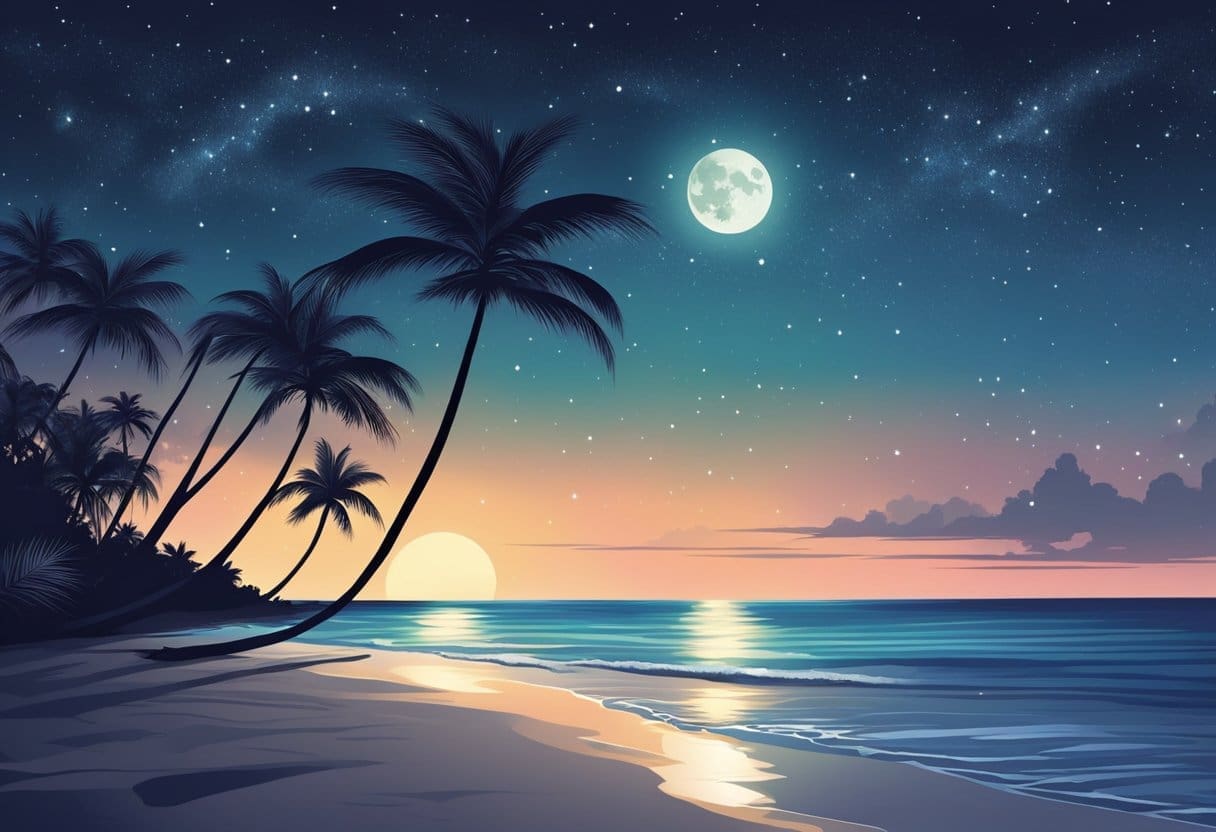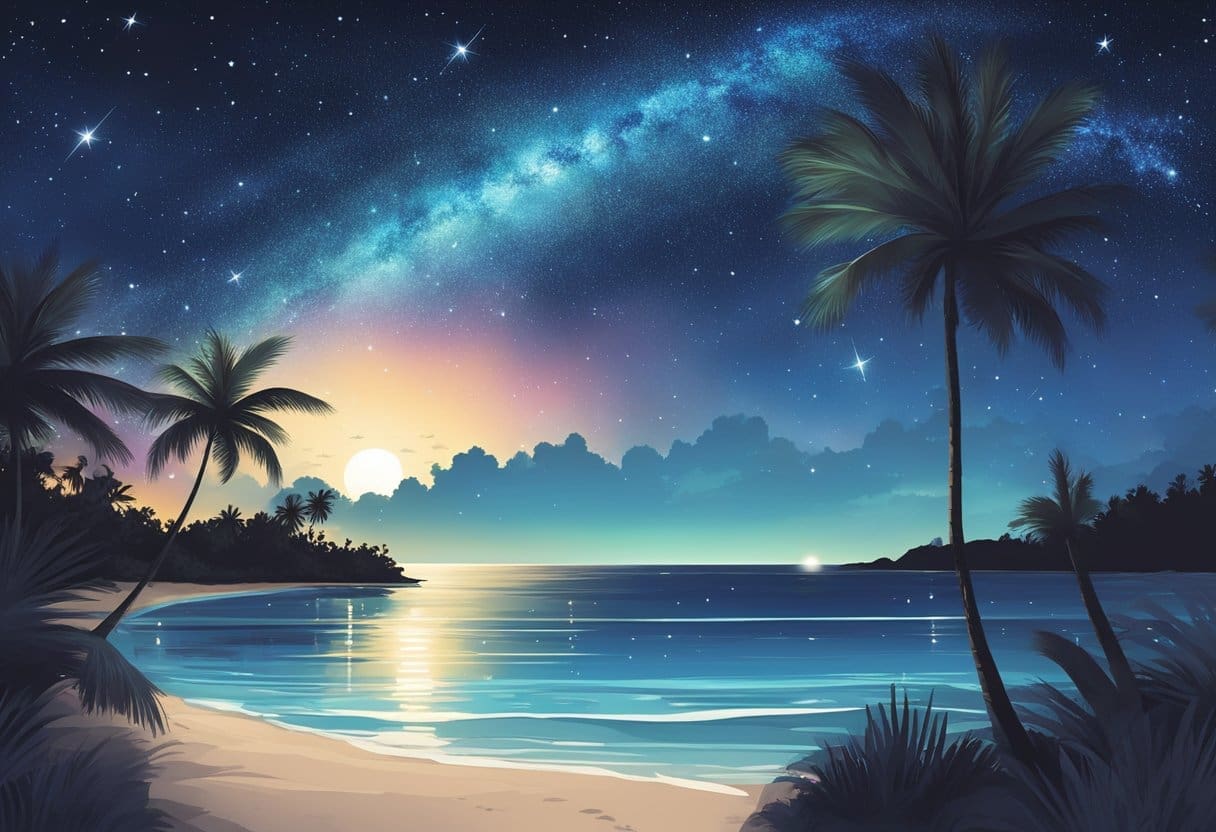Riviera Maya’s Premier Stargazing Destinations

The Riviera Maya, with its pristine beaches and sprawling resorts, offers more than just sun-soaked days. As night falls on the coastal stretch of Akumal, a different kind of attraction captivates visitors: the night sky. Away from the glare of city lights, Akumal’s dark sky presents a celestial showcase, making it an ideal place for stargazers to observe the constellations, planets, and meteor showers in their full glory.
Stargazing in Akumal combines the pleasure of the region’s nightlife with the awe-inspiring beauty of the cosmos. To experience the best of what the night sky has to offer, it is important to know the optimal viewing spots and times. The beaches along the Riviera Maya, known for their tranquility and minimal light pollution, serve as perfect backdrops for astronomy enthusiasts and romantic observers alike.
Tips on where to go for the clearest views and advice on when to visit are valuable for anyone looking to immerse themselves in the starlit spectacle. Whether using the naked eye, a simple pair of binoculars, or a sophisticated telescope, there are celestial wonders to suit all levels of interest and experience. Observing the heavens here provides not just a chance to see the stars, but also an opportunity to connect with the ancient Maya who once used these same stars to navigate and tell time.
Essentials of Stargazing in Akumal
Akumal, with its clear, dark skies, is a prime location for stargazing. To enhance the experience, one should consider the following essentials:
Location: Choose a spot away from the light pollution of cities and resorts. The beaches of Akumal, being less crowded, are ideal. Specifically, Half Moon Bay and Akumal Bay offer expansive views of the sky.
Time: The best stargazing times are typically on clear nights, during the new moon when the sky is darkest. Plan between the months of May to September, coinciding with turtle nesting season, for minimal beach lighting.
Equipment: A simple binocular or a portable telescope can significantly enrich the viewing experience. Additionally, a red-light flashlight will improve night vision without interfering with stargazing.
Clothing: Since evenings can be cool, comfortable and warm clothing is recommended.
Guidance: Utilize stargazing apps or local astronomical guides to help find and identify celestial objects.
| Stargazing Tip | Details |
|---|---|
| Avoid Full Moon | A full moon can wash out dimmer stars. Opt for nights with a new moon. |
| Check Weather | Clear, cloudless skies are crucial for optimal viewing conditions. |
| Acclimatize Eyes to Darkness | Allow 15-20 minutes for eyes to adjust to the dark for better viewing. |
| Use Red-Light Flashlights | Aids night vision and doesn’t disrupt wildlife or fellow stargazers. |
| Respect Wildlife and Environment | Remain mindful of the surroundings and maintain a clean presence. |
One should always stay informed about local regulations, respect the natural habitat, and minimize their impact on the environment while stargazing in Akumal.

Best Stargazing Spots in Riviera Maya
The Riviera Maya offers several prime locations for stargazing, where one can enjoy the splendors of the night sky away from light pollution. Visitors are treated to a celestial display that beckons astronomers and romantics alike.
Punta Laguna Nature Reserve: This secluded reserve is away from city lights, offering a dark sky perfect for stargazing. Visitors will find the stillness of the lagoon mirrors the stars above, creating a tranquil experience.
Sian Ka’an Biosphere Reserve: Renowned for its natural beauty, Sian Ka’an is also a haven for night sky enthusiasts. The reserve’s remote location means minimal light pollution, allowing for unobstructed views of the Milky Way on clear nights.
- Akumal Beach: Noteworthy for its turtle nesting sites, Akumal Beach also serves as an excellent spot for stargazing. The beach’s horizon offers an expansive view of the sky’s canvas.
- Coba Archaeological Site: The ancient Mayan ruins of Coba present a unique backdrop for nighttime sky viewing. The towering Nohoch Mul pyramid adds a touch of awe to the stargazing experience.
- Xpu-Ha Beach: For a serene and intimate stargazing setting, Xpu-Ha Beach is a favored choice. The minimal commercial development in the area means darker skies and more vibrant star visibility.
When choosing the best time for stargazing, it’s important to consider the lunar cycle. Nights during the new moon phase provide the darkest skies. During these periods, constellations and shooting stars are most visible, making it an ideal time for observers to explore the night sky’s wonders.
Optimal Stargazing Times Throughout the Year
Stargazers can look forward to clear skies and minimal light pollution in Akumal during specific times of the year. The dry season, typically from November to April, offers the best viewing conditions. Skies are generally clearer, and humidity is lower, enhancing visibility.
The New Moon phase is crucial for optimal stargazing, as it ensures the darkest skies. During this time, the absence of moonlight allows for the visibility of fainter stars and celestial events. Here is a monthly breakdown of the best times for stargazing in Akumal:
| Month | New Moon Date |
|---|---|
| January | 1st or 2nd week |
| February | 1st or 2nd week |
| March | 1st or 2nd week |
| April | 1st or 2nd week |
| November | 1st or 2nd week |
| December | 1st or 2nd week |
Note: Exact dates for the New Moon vary each year and must be checked on a current lunar calendar.
For meteor showers, the Quadrantids peak in early January, the Perseids in mid-August, and the Geminids in early-to-mid December. These events are best viewed several hours after midnight when the meteors’ radiant points are highest in the sky.
Planetary observations vary annually, but Jupiter and Saturn are often visible during the dry season months. Venus can be seen in the early evening or morning, depending on its position in its orbit.
To summarize, combine the reduced light pollution during the dry season with the dark skies of the New Moon phase for ideal stargazing conditions in Akumal. Keep an eye on the lunar calendar and astronomical events to plan the perfect night under the stars.
Stargazing Equipment Recommendations
When visiting Akumal for stargazing, equipped with the right gear can enrich one’s experience under the Riviera Maya night sky. Here is a concise guide to the essential equipment for stargazers, ranging from novices to seasoned observers.
Telescopes
For deep sky observations:
- Dobsonian Telescope: Offers a large aperture at a reasonable cost.
- Reflector Telescope: Renowned for clear, crisp images of distant stars and galaxies.
For the planets and moon:
- Refractor Telescope: It’s known for high contrast and sharp images, excellent for viewing planets.
Binoculars
- Celestron SkyMaster 15×70: Best for wide-field viewing and easy handling.
- Nikon Aculon A211 10×50: A good balance of magnification and field of view.
Mounts and Tripods
- GoTo Mounts: They automatically track celestial bodies, ideal for long observation sessions.
- Sturdy Tripod: Essential for binocular stability.
Accessories
Star Maps: Helps in locating constellations and understanding the night sky layout. Red Flashlight: Preserves night vision while reading star maps or adjusting equipment.
Comfort
- Portable Chair or Blanket: For prolonged periods of observation.
- Insect Repellent: To avoid distractions from the local fauna.
Every stargazer’s needs may vary, but a combination of any of the above can significantly enhance the stargazing experience in Akumal after dark. Remember, the best time for stargazing is during the new moon phase when the sky is darkest.

Conservation Efforts and Light Pollution
In Akumal and the broader Riviera Maya region, concerted efforts are in place to mitigate light pollution for protecting the environment and enhancing the stargazing experience. The region’s conservation initiatives actively promote responsible lighting practices to minimize the impact on wildlife, particularly sea turtles, which depend on dark beaches for nesting.
Critical Conservation Initiatives:
- Turtle Sanctuary Zones: Areas designated to protect nesting sites, strictly regulating artificial lighting.
- Public Awareness Campaigns: Education on the impact of light pollution on local ecosystems and night sky visibility.
- Eco-friendly Lighting Regulations: Encouraging the adoption of downward-facing, shielded lighting in urban areas.
Local Challenges and Responses:
Light pollution remains a challenge, with ongoing development in tourism increasing the risk. However, local authorities and environmental groups are stepping up to promote dark sky practices.
- Development Controls: Setting limits on outdoor lighting in new construction projects.
- Eco-Labeling Programs: Incentivizing businesses to adopt best practices in outdoor lighting for certification.
- Community Involvement: Engaging residents in light pollution reduction via local ordinances and educational workshops.
Best Practices for Stargazers:
- Opt for accommodations promoting eco-friendly lighting.
- Participate in night sky programs that adhere to conservation guidelines.
- Support businesses and initiatives championing dark sky preservation.
By these means, Akumal strives to balance human activity with ecological preservation to maintain its allure as a prime stargazing destination.
Cultural Significance and Local Folklore
Akumal, in the heart of the Riviera Maya, has a rich cultural tapestry woven with Mayan traditions and folklore that enhances its nocturnal allure. Stargazing in Akumal is not just about the stars; it’s also a gateway to understanding the Mayan cosmology.
Mayan Astronomy: The ancient Maya were skilled astronomers. They observed the cycles of celestial bodies, relying on the stars to dictate agricultural seasons and ceremonial events. The night sky’s significance is evident in the ruins scattered across the Yucatan Peninsula.
Sacred Cenotes: For the Maya, cenotes — natural sinkholes exposing groundwater beneath — were considered portals to the underworld and were often used for ritualistic offerings. They were also pivotal in celestial events, mirroring the constellations above.
| Local Folklore | Astronomical Elements |
|---|---|
| Aluxes (Mayan spirits) | Pleiades Star Cluster |
| Chaac (Rain God) | Rainy Season Constellations |
| Kukulkan (Feathered Serpent) | Spring and Autumn Equinoxes |
Stargazers can connect with these historical narratives by observing the same celestial wonders that the Maya once revered. Some of these noteworthy sights include:
- Pleiades Star Cluster: Also known as “the seven sisters,” this cluster is central to many local legends about the aluxes, small mythical creatures of Mayan lore.
- Orion’s Belt: Visible during the dry season, it connects to stories of the gods and is easily identifiable.
Visitors can reflect on these stories while looking up at the pristine Akumal sky, where the past and present merge in a constellation of cultural significance.